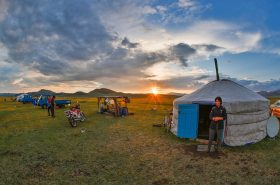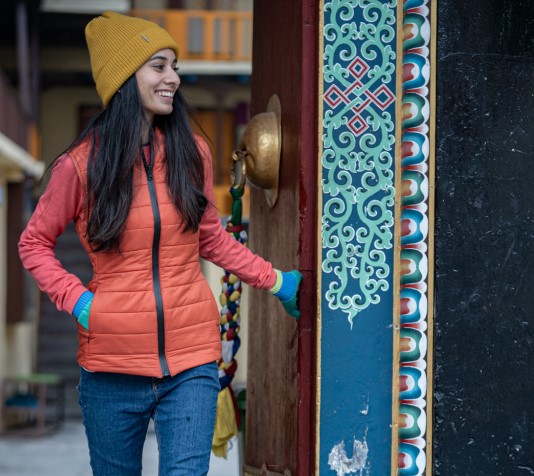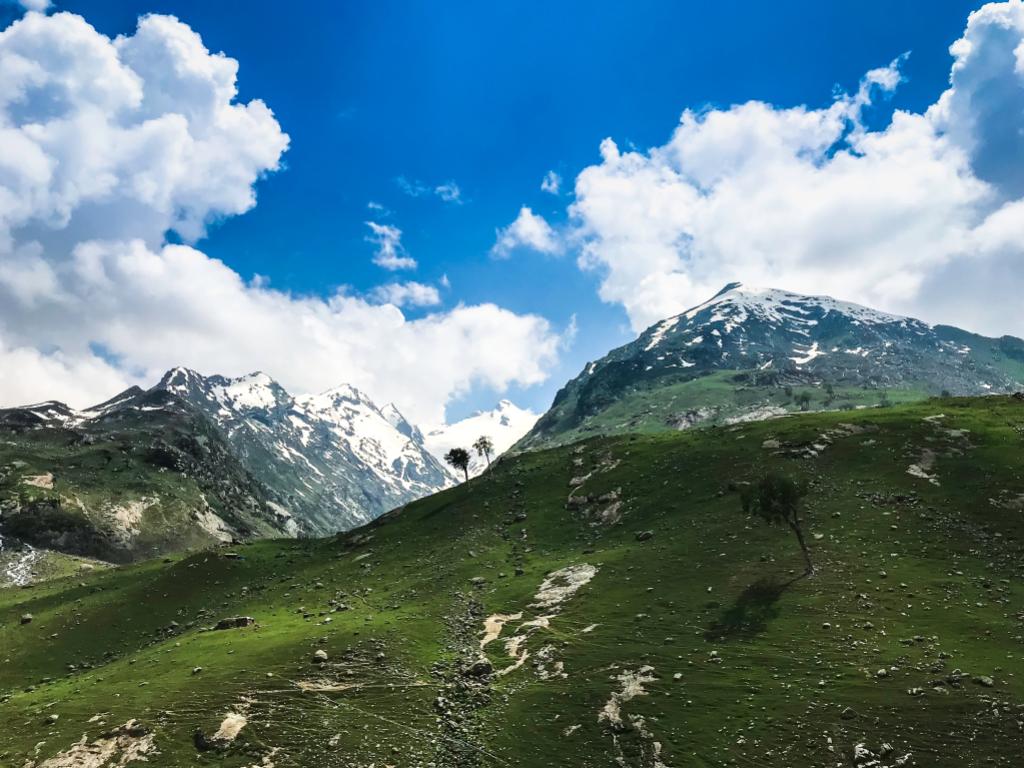
Being one of the 12 Jyotirlinga, the Amarnath cave is considered to be the final frontier in the spiritual devotion of millions of Indians. This is largely due to its close association with Lord Shiva, as the cave contains the shivling that represents God himself and entices many, who need to see the holy place with their own eyes. But as it is quite a trek you will have to take care of a lot of things to prepare for Amarnath yatra.
Table of Contents
Amarnath Cave – A blessed site
At around 12,756 ft. above sea level, the Amaranth cave resides in the state of Jammu and Kashmir. Surrounded by snowy mountains, the Amaranth cave is an unworldly place. A Shivling made of an ice stalagmite lies in a 130ft high Amarnath cave and it is a destination for thousands of pilgrims who take up a perilous journey every year.
There are rich mythos behind this holy shrine visited by as many as 634,000 pilgrims in 2011. In the month of July-August, the weather softens to allow pilgrims to visit the shrine, who consider this time to be auspicious already due to the month of Shravana.
People across the region travel to Srinagar from where the holy cave lies just 141 km away. A very common route to take is from Pahalgam via Chandanwari. State-regulated transport vehicles are often used to reach Pahalgam and thereon it is a 5-day journey on foot to reach the cave, as devotees face a dangerous road ahead through the Himalayan range.
Travel to Pahalgam is less arduous as public or private vehicles travel along the Lidder River. Along the journey, the pilgrim goes through beautiful places such as Pissu Top, Sheshnag, and Panchtarni. From the snowy mountains around, people travel through beautiful attractions, such as the Sheshnag Lake and Mahagunas Pass.
“To say the landscape on the Amarnath yatra is breathtaking is an understatement.” Sandeepa and Chetan shares some of their experience, “Green and fresh is how the trek begins. The initial path is through a lively pine forest and waterfalls. In some parts, we walked next to a valley, and some were through flat meadows. We crossed some glaciers, played in the snow, and also waded through the freezing waters of the river at one point.”
Along the way, even at some of the most remote places, pilgrims are now greeted with better facilities to help them keep going. The government and many non-profit organizations supply food and resting tents for travelers for free. A large number of ‘Pandals’ are erected to serve the pilgrims for their daily needs. Tea stalls and small restaurants are easily accessible and one can even buy firewood and gas to cook their food.
The annual Amaranth Yatra is organized by the Shree Amarnath Yatra Trust with the help of the State government of Jammu and Kashmir. The presence of security personnel allows the pilgrims to travel with little fear of any unwanted incident.
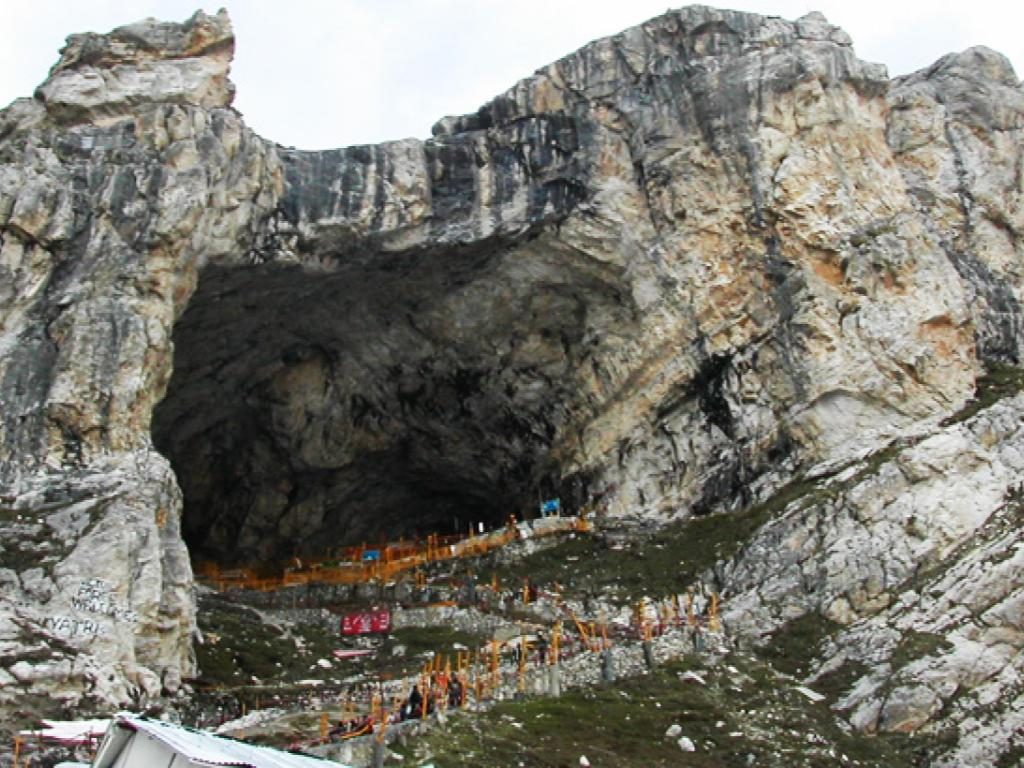
Amarnath Cave
Acquiring Necessary Permissions for Amarnath
You must have all the necessary permissions and documents to prepare for Amarnath Yatra.
Understanding the Permit System:
- The Yatra Permit: To embark on the Amarnath Yatra, you must obtain a Yatra Permit. This permit is essential for tracking the number of pilgrims and ensuring their safety.
- Compulsory Health Certificate (CHC): A valid CHC is mandatory for all Yatra participants. It certifies that you are physically fit to undertake the arduous journey in challenging conditions.
- Registration Card: You’ll also need a Registration Card, which provides essential details about your identity and travel plans.
2. Online Registration Process:
- Visit the official Amarnath Yatra website (provide the website link) to start the registration process.
- Fill in the required personal information, including your name, age, address, and contact details.
- Upload scanned copies of your passport-sized photograph and any identity proof documents as specified.
- Select your preferred route and date for the Yatra, keeping in mind the available time slots.
- Pay the necessary permit fees online through the secure payment gateway.
- Once your registration is complete, you will receive a confirmation email and permit details.
3. Offline Registration Options:
- If you prefer offline registration, you can visit designated bank branches and registration centers in your area.
- Collect the registration form, fill it out with accurate information, and submit it along with the required documents.
- Pay the permit fees at the bank or registration center and collect your permit upon approval.
4. Health Certificate Requirements:
- Schedule a medical check-up with a certified medical practitioner.
- Request the Compulsory Health Certificate (CHC), which includes a fitness assessment and a declaration of your overall health.
- Ensure that the CHC is stamped and signed by the authorized medical professional.
5. Documentation and Identity Proof:
- Carry original and photocopies of your identity proof documents, which may include an Aadhar card, passport, or voter ID, as specified during registration.
6. Permit Fees and Costs:
- Be aware of the permit fees and costs associated with the Yatra.
- Ensure that you pay the fees through official channels and adhere to government pricing guidelines.
7. Adherence to Guidelines:
- Strictly adhere to government regulations and guidelines throughout the Yatra.
- Failure to comply with these rules can result in permit cancellation or legal repercussions.
8. Timely Registration and Booking:
- Complete the registration and permit application process well in advance, especially during peak Yatra season.
- Accommodations and permits may have limited availability, so early booking is advisable.
Preparing for the Yatra
You need to be physically fit to take a journey this difficult. This is why experts advise a traveler to take up exercise a month earlier before starting the journey. Walk for 4-5 km every morning or evening to prolong your sustainability for a journey on foot. Increase your oxygen efficiency by working on some deep breathing exercises. As you can see there are lot of things you will have to consider to prepare for Amarnath Yatra.
“Practice climbing by trekking up a nearby mountain.” Sandeepa and Chetan have advice, “If there isn’t one nearby, climb up the steps in the house or building.”
Remember, this is a place with some of the most grueling climbs a person may encounter in his lifetime. With high elevations and adverse weather, things can get pretty difficult, if you are not physically capable of traveling. So, always go for a prior consultation with your doctor before starting a trip.
Even in the months of July-August, the temperature in the area can fall to 5 degrees Celsius or lower. So bring a sufficient amount of protection to cover up your body. Get your clothes for Amarnath Yatra in Mumbai itself, before starting with the journey. This is caution but the Amarnath yatra is quite doable, even on foot. There is no reason to be scared of the yatra. Respect the mountain and be prepared.
The question of how to stay warm during the Amarnath Yatra is an important one. So, here is a list of things you must bring with you.
- Windcheater
- Raincoat
- Waterproof trekking shoes
- Monkey cap
- Gloves
- Jacket
- Woollen socks
- Waterproof trousers
Going for Amaranth Yatra and looking for winterwear for the pilgrimage is now easy enough, as you can find an awesome collection right here.
For ladies, something like a traditional saree will prove to be of great inconvenience. What you need is something in which you can travel more comfortably for example Salwar Kameez, a tracksuit or a pant shirt covered with woollen clothing. You can find some excellent thermals for the Amarnath Yatra available in Bandra.
Physical Fitness and Health
The Amarnath Yatra is not only a spiritual journey but also a physically demanding trek through challenging terrain. To ensure a safe and successful Yatra, it’s crucial to prioritize your physical fitness and overall health. You must take care of fitness and your health to prepare for Amarnath Yatra. There will be some things one should focus on while trekking for the Amarnath Yatra.
- Trekking Challenges: The Yatra involves trekking over uneven paths, steep ascents, and rocky terrain. Being physically fit helps you navigate these challenges with ease.
- Altitude Considerations: The Amarnath Cave is situated at a high altitude of approximately 3,888 meters (12,756 feet). Physical fitness aids in acclimatization, reducing the risk of altitude-related illnesses.
- Long-Distance Walking: Pilgrims often cover long distances on foot, and the Yatra can take several days to complete. Good physical fitness ensures you can sustain the journey comfortably.
To prepare for Amarnath Yatra, consider the following tips:
- Regular Exercise: Begin a fitness regimen well in advance of the Yatra. Focus on cardiovascular exercises like walking, hiking, and cycling to build stamina. Strength training exercises can help with carrying a backpack and managing steep inclines.
- Aerobic Conditioning: Engage in aerobic exercises to improve your lung capacity and endurance. Activities like jogging, swimming, or brisk walking are excellent choices.
- Altitude Acclimatization: High altitudes can pose health risks, including altitude sickness. Plan your Yatra itinerary to include gradual ascents and acclimatization days at intermediate stops. Avoid overexertion at higher altitudes.
- Nutrition: Maintain a balanced diet rich in carbohydrates, proteins, and essential vitamins and minerals. Hydrate adequately and carry energy snacks for sustenance during the trek.
- Medical Check-up: Before embarking on the Yatra, consult a healthcare professional for a comprehensive medical check-up. Address any underlying health concerns and discuss altitude-related issues.
- Medications: Carry any prescribed medications for altitude sickness prevention or other health conditions. Consult a doctor for suitable medications.
- Stay Hydrated: Proper hydration is crucial at high altitudes. Drink water regularly, even if you don’t feel thirsty. Avoid excessive caffeine or alcohol consumption.
- Pack Light: Travel as light as possible. Only carry essential items and clothing to reduce the physical strain of a heavy backpack.
- Listen to Your Body: Pay close attention to your body’s signals. If you experience symptoms of altitude sickness, fatigue, or discomfort, take them seriously and rest as needed.
Clothing for the Yatra
The Amarnath Yatra takes you through diverse terrain and weather conditions, from the scorching heat of lower altitudes to the chilly cold of the high Himalayas. Choosing the right clothing is crucial for comfort and safety during this pilgrimage. This will help you to prepare for Amarnath Yatra.
Proper clothing is essential for comfort and safety during this journey. Here’s a guide on what to wear:
Layering Strategy:
-
Base Layer:
- Start with a moisture-wicking base layer to keep sweat away from your skin. Look for materials like merino wool or technical fabrics.
- Base layers should cover both your upper and lower body.
-
Mid Layer:
- The mid-layer provides insulation and warmth. Fleece jackets or down vests work well.
- Depending on the weather, you can add or remove mid-layers to regulate your body temperature.
-
Outer Layer:
- Your outer layer should be waterproof and windproof to protect against rain, snow, and cold winds. Invest in a high-quality winter jacket and pants.
- Ensure that your outer layer is breathable to prevent moisture buildup inside.
Consider Varying Weather Conditions:
- Lower Altitudes: At the beginning of the Yatra, especially in Pahalgam or Baltal, the weather can be relatively mild. Wear comfortable, moisture-wicking clothing, such as light pants, T-shirts, and a sun hat.
- Intermediate Altitudes: As you ascend, temperatures drop. Add mid-layers and ensure you have a warm hat and gloves. A light rain jacket or windbreaker may be necessary for unpredictable weather.
- Higher Altitudes: At the Amarnath Cave, temperatures can plummet below freezing, even during summer. Dress in warm, insulating layers, including thermal leggings, a heavy jacket, and a balaclava or scarf to cover your face.
Footwear:
- Invest in sturdy, waterproof trekking boots with good ankle support and non-slip soles. Ensure they are well broken in to prevent blisters.
Accessories:
- Gloves: Carry both lightweight gloves for lower altitudes and heavy, insulated gloves for higher altitudes.
- Headgear: Bring a warm hat that covers your ears, as well as a sun hat or cap for lower altitudes.
- Scarves and Neck Gaiters: These are versatile for keeping your neck and face warm.
- Socks: Opt for moisture-wicking, insulating socks that prevent blisters. Bring extra pairs.
- Sunglasses: Protect your eyes from intense sunlight and snow glare. Choose sunglasses with UV protection.
Rain Gear:
- Carry a compact, lightweight rain jacket or poncho that can be easily packed and pulled out when needed.
Footwear and Gear
Selecting the right footwear and gear is crucial for a safe and comfortable pilgrimage as it will help you to prepare for Amarnath yatra. Here’s a guide on what to consider:
Footwear:
- Trekking Boots:
- Invest in high-quality, waterproof trekking boots with good ankle support. They should have sturdy soles with excellent traction for rocky and uneven terrain.
- Ensure your boots are well broken in before the Yatra to prevent blisters and discomfort.
- Consider purchasing boots with insulation for warmth, especially if you plan to visit during colder months.
- Extra Footwear:
- Carry a pair of comfortable, lightweight camp shoes or sandals to wear during breaks and at your campsite.
Gear:
Backpack:
- Use a comfortable, well-fitted backpack with padded shoulder straps and a hip belt for weight distribution.
- Opt for a backpack with enough capacity to carry your clothing layers, water, snacks, first-aid kit, and essentials.
- Ensure it has compartments and pockets for easy organization.
First-Aid Kit:
- Pack a comprehensive first-aid kit that includes essentials like bandages, antiseptic wipes, pain relievers, and any necessary medications.
- Include treatments for common ailments like blisters and altitude sickness.
Navigation Tools:
- Carry a map of the Yatra route and a compass or GPS device if you’re not familiar with the area.
- Have a reliable phone with maps and emergency contact information.
Emergency Gear:
- Pack emergency essentials such as a whistle, signal mirror, and a space blanket for warmth.
- Ensure you have a fully charged mobile phone with emergency contact numbers saved.
Clothing Repair Kit:
- Include a small repair kit with items like patches, sewing needles, and thread for on-the-go clothing repairs.
Trash Bags:
- Follow Leave No Trace principles and carry trash bags to pack out your waste.
Trekking Permit and ID:
- Keep your Yatra permit, identification, and any other necessary documents in a waterproof pouch for protection.
Camping Equipment:
- If you plan to camp along the Yatra route, bring lightweight camping gear such as a tent, sleeping bag, and camping stove.
- Ensure your camping equipment is suitable for the expected weather conditions and easy to carry.
Water Bottles and Hydration System:
- Carry reusable water bottles to stay hydrated. Ensure they are easy to access from your backpack.
- Consider using a hydration reservoir (bladder) for convenient on-the-go drinking.
Headlamp or Flashlight:
- A headlamp or flashlight with extra batteries is essential for navigating in low-light conditions, especially if you start early in the morning or return late.
Ensure your gear is in good condition and that you’re familiar with how to use it properly. This will help you to prepare for Amarnath Yatra that is safe and comfortable.
Safety Measures for the Amarnath Yatra
Ensuring your safety during the Amarnath Yatra is paramount, given the challenging terrain and unpredictable weather conditions. Here are essential safety measures to consider to prepare for Amarnath yatra.
1. Physical Fitness:
- Prioritize physical fitness by engaging in regular exercise and cardio workouts to prepare your body for the demands of the Yatra.
- Include altitude acclimatization in your fitness routine to minimize the risk of altitude-related illnesses.
2. Adequate Preparation:
- Familiarize yourself with the Yatra route, its challenges, and the locations of medical facilities and emergency services.
- Research the weather conditions for your planned travel dates and pack accordingly.
3. Yatra Permit and Registration:
- Ensure you have the required Yatra permit, Compulsory Health Certificate (CHC), and registration card.
- Keep these documents in a waterproof pouch or bag for protection.
4. Communication: – Carry a fully charged mobile phone with emergency contact numbers saved. – Use your phone sparingly to conserve battery power.
5. Weather Awareness:
- Stay updated on weather forecasts throughout your journey, especially if you plan to trek at higher altitudes.
- Be prepared for sudden changes in weather, including rain, snow, and strong winds.
6. Hydration and Nutrition:
- Stay well-hydrated by drinking water regularly, even if you don’t feel thirsty. Dehydration can worsen altitude sickness.
- Maintain a balanced diet with an emphasis on carbohydrates for energy.
7. Emergency Contacts:
- Carry a list of emergency contacts, including local authorities, medical facilities, and your travel companions.
- Ensure your mobile phone is fully charged and has reception in the areas you plan to visit.
8. Safety Gear:
- Wear appropriate clothing, including moisture-wicking layers, insulated jackets, and waterproof outerwear.
- Use trekking poles for stability, especially during steep descents.
- Carry a headlamp or flashlight with extra batteries for low-light conditions.
Take care when on foot
You need to acclimatize to the high altitude so as not to fall sick during the excursion you are going to face.
So always give your body 48 hours to adjust itself to the high elevation. Do not go for a long period of a walk once you arrive at a stop and always remember not to sleep at an altitude higher than 300 m than your previous night camp.
Walk with a steady pace and do not exert unnecessary pressure on your body. Apply cold cream or sunscreen to protect your skin and avoid harmful substances such as alcohol and cigarettes.
In a high-altitude trek like this, you are faced with reduced air pressure. That means very low levels of oxygen can cause health issues such as acute mountain sickness (AMS), high altitude cerebral edema (HACO), and high altitude pulmonary edema (HAPO). Low humidity and extreme cold can make things worse, so never ignore any of the symptoms, such as headache, nausea, dizziness, and fatigue. You may also experience a loss of appetite and even vomiting. If you are experiencing any of these symptoms, visit your nearest medical facility for treatment.
Dehydration is a common phenomenon at high altitude travels, so consume around 5 liters of fluids every day. Eat a lot of carbohydrate-rich food and carry food items with you always which may include biscuits, toffees, dry fruit, and tinned food.
These things must be noted down to prepare for Amarnath yatra.
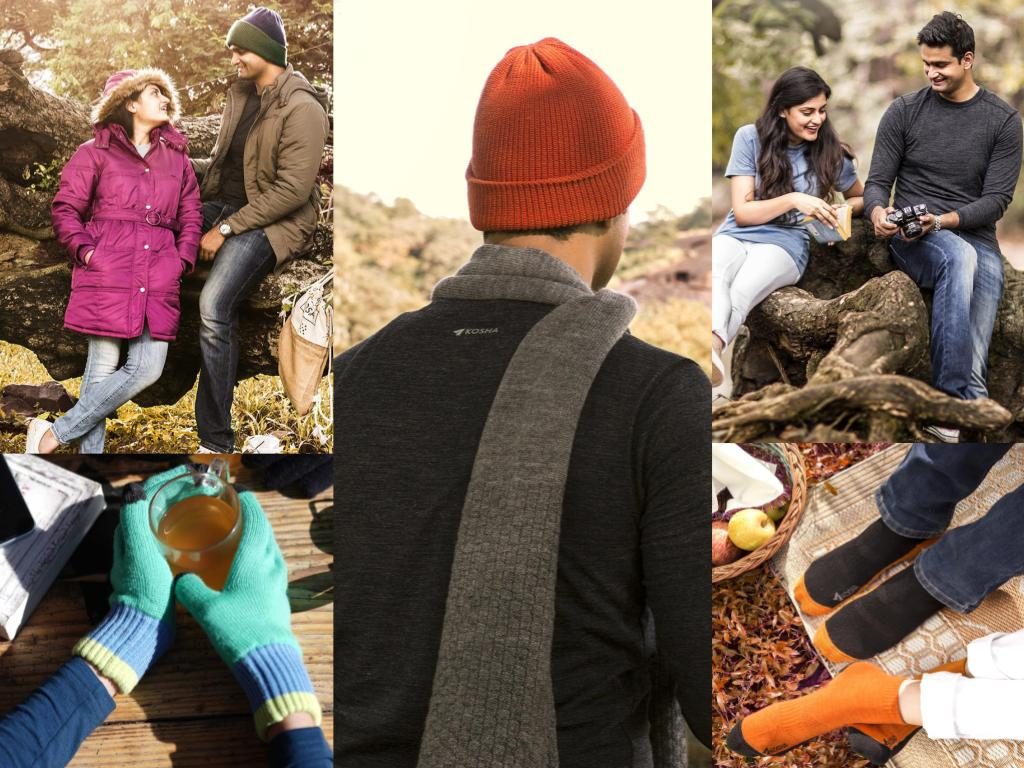
Have a blissful journey to the divine place with Kosha winter wear.
Take care not to contaminate a beautiful place
We all need to preserve the sanctity of such a beautiful place and must be cautious not to pollute the environment around us. So here are a few things you should avoid.
- As the use of polythene is banned in the Yatra area, do not bring the same with you, as you may very well get into trouble.
- Do not discard any of your items in the Yatra area. The pilgrims are provided with waste disposal bins at regular intervals, so make use of them.
- Throw your organic waste only in the green dustbins.
Even though a large part of this write-up went through how difficult this entire journey is, you won’t be able to resist going to one of the most beautiful places on Earth. Beyond the mundane comprehension of a typical human, thousands of devotees plow through some of the vicious terrains to get one good look at the Shivling. The passion among the devotees remains undeterred, which certainly may include you. So be well prepared for Amarnath yatra and enjoy the travel.
FAQs
Certainly, here are some frequently asked questions (FAQs) that can help you to prepare for Amarnath Yatra:
When does the Amarnath Yatra take place?
The Yatra typically takes place during the summer months, usually between June and August. The exact dates can vary each year.
How do I obtain a permit for the Amarnath Yatra?
To undertake the Amarnath Yatra, you need to obtain a Yatra Permit. The permit can be obtained through an online registration process or at designated offline registration centers. You’ll also need a Compulsory Health Certificate (CHC) and a Registration Card.
What are the different routes for the Amarnath Yatra?
There are two main routes for the Yatra: the Pahalgam route and the Baltal route. The Pahalgam route is longer but considered less strenuous, while the Baltal route is shorter but more challenging.
What should I wear during the Amarnath Yatra?
Dress in layers to adapt to changing weather conditions. This includes moisture-wicking base layers, insulating mid-layers, and waterproof outerwear. Sturdy, waterproof trekking boots are essential.
Can I undertake the Amarnath Yatra independently, or do I need a guide?
While you can undertake the Yatra independently, it is advisable, especially for first-time pilgrims, to travel with a group or in the company of experienced trekkers. Guides can provide valuable assistance and support.
Conclusion
Embarking on the Amarnath Yatra is a spiritual journey that requires meticulous preparation to ensure both safety and a spiritually fulfilling experience. As you prepare for this pilgrimage, remember that it’s not just a physical trek; it’s also a test of your mental and emotional strength.
Prioritize your physical fitness. Engage in regular exercise, aerobic conditioning, and altitude acclimatization. A healthy body can better withstand the challenges of the Yatra. Ensure you have all the necessary permits, including the Yatra Permit, Compulsory Health Certificate (CHC), and Registration Card. Keep these documents secure and accessible. Choose your clothing wisely, following a layering strategy to adapt to varying weather conditions. Your attire should keep you warm, dry, and comfortable throughout the Yatra.
Follow safety measures diligently, including staying hydrated, being weather-aware, and respecting altitude limits. Always prioritize your health and well-being.
By meticulously preparing in these areas, you’ll not only enhance your safety but also open the door to a more profound and spiritually enriching experience during the Amarnath Yatra. This sacred journey is an opportunity to connect with your faith, nature, and your inner self. Embrace it with reverence, humility, and a spirit of adventure.
Acknowledgement:
Special thanks to Sandeepa and Chetan for sharing their remarkable experience with us and you can visit them here.
Still not sure about what layers to get for your cold weather needs? Let us help you with the right layers! Call us / WhatsApp us at +91 9820999006 between 11 am & 6 pm IST Mondays to Saturdays.
Stay tuned for more stories! Share your adventure and experience with us by tagging us @koshatravelwear on Instagram, Facebook, Linked, Pinterest, and use #mykoshastory!
